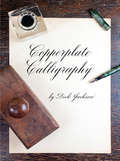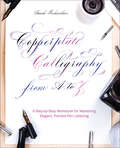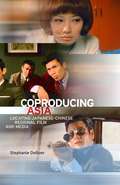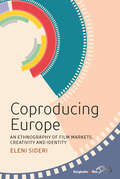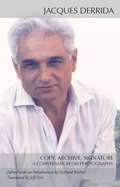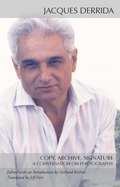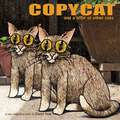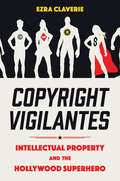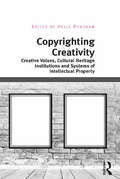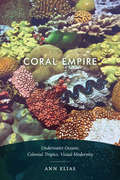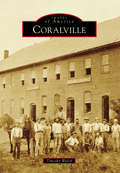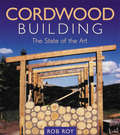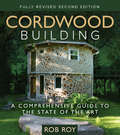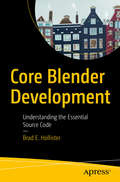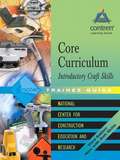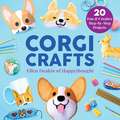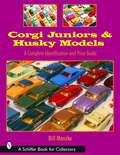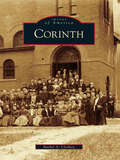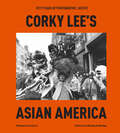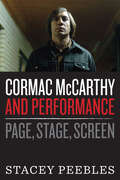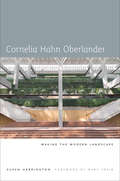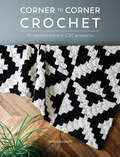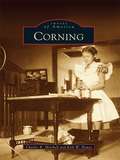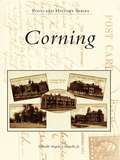- Table View
- List View
Copperplate Calligraphy
by Dick JacksonNo need for copper or plates to achieve the distinctive calligraphic script of eighteenth-century Europe - just a pen, ink, and this comprehensive workbook will do. Master calligrapher Dick Jackson explains the basic strokes for almost all letters of the copperplate alphabet. Simple instructions and examples introduce the swirls, flourishes, strikings, and thick and thin strokes that make copperplate calligraphy a source of pleasure for the practitioner and a delight to the reader.A historical introduction traces the growth of copperplate from its roots in the French ronde of the seventeenth century, to its adaptation by English clerks into their copybooks, and the development of the style known as round hand. In addition, guide sheets and instructions for individual letters and numbers offer aspiring calligraphers a practical approach to this enduring art form.
Copperplate Calligraphy from A to Z: A Step-by-Step Workbook for Mastering Elegant, Pointed-Pen Lettering (Hand-lettering And Calligraphy Practice Ser.)
by Sarah RichardsonLearn to draw the popular classic script with this easy-to-use, full-color, and very modern guide.Pointed pen calligraphy doesn’t have to be intimidating! This photo-packed guide breaks down every skill, step, and stroke into easy-to-learn techniques. It shows you how to build a solid foundation in drawing beautiful letters as well as ways to add flourishes and embellishments to your personal projects. Nothing is overlooked, including:• Step-by-Step Instructions• Color Photos• Practice Pages• Expert Tips and Tricks• DIY Projects• Inspiration and Ideas
Coproducing Asia: Locating Japanese–Chinese Regional Film and Media
by Stephanie DeBoerEast Asia largely functions as a single film and media market, but behind it exists a multifaceted world of coproduction crossing linguistic and national borders. In Coproducing Asia, Stephanie DeBoer guides readers through a rich genealogy of regional film and media coproduction, all the while introducing innovative methods for their examination across decades, locations, and scales of production in East Asia and beyond.Beginning with the present and moving back in time, Coproducing Asia paints a picture of the assemblages of coproduction in East Asia and their negotiation of Cold War geopolitics and imperial legacies along with the emergence of China as a global market. Addressing wide-screen international romances of the early 1960s, technology transfers of Cold War action cinema, Sino–Japanese &“friendship&” TV collaborations, Asian omnibus film and video, and more recent China-centered blockbusters, DeBoer deftly contextualizes each case study while accounting for the difficulties involved in the cultural, creative, and industry mediations associated with coproduction. Based on rarely seen archival research as well as interviews with producers in Tokyo, Hong Kong, Taipei, and Shanghai, Coproducing Asia provides compelling frames for understanding the significance of film and media coproduction in East Asia, making clear that it is not only a site of technological transformation but also an arena for competing senses of regional location and place.
Coproducing Europe: An Ethnography of Film-markets, Creativity and Identity
by Eleni SideriUp until the 1990s, when the EU launched film policies intended to encourage political and cultural collaboration among its member states, film production was based on the cultural and national values of individual nations. Coproducing Europe explores the impact of these EU policies on the coproduction networks that now serve as a driving force in contemporary creative economies. By focusing on regional film markets in Thessasloniki, Sarajevo, and Tbilisi, this comparative ethnography looks beyond the economic nature of film coproductions to their role in Europeanisation, memories of the Cold War, and preconstructed political agendas.
Copy, Archive, Signature: A Conversation on Photography
by Jacques Derrida Jeff Fort Gerhard RichterThis book is based on the interview on the topic of photography that Jacques Derrida granted in 1992 to the German theorist of photography Hubertus von Amelunxen and the German literary and media theorist Michael Wetzel.
Copy, Archive, Signature: A Conversation on Photography
by Jacques Derrida Jeff Fort Gerhard RichterThis book makes available for the first time in English-and for the first time in its entirety in any language-an important yet little-known interview on the topic of photography that Jacques Derrida granted in 1992 to the German theorist of photography Hubertus von Amelunxen and the German literary and media theorist Michael Wetzel. Their conversation addresses, among other things, questions of presence and its manufacture, the technicity of presentation, the volatility of the authorial subject, and the concept of memory. Derrida offers a penetrating intervention with regard to the distinctive nature of photography vis-à-vis related technologies such as cinema, television, and video. Questioning the all-too-facile divides between so-called old and new media, original and reproduction, analog and digital modes of recording and presenting, he provides stimulating insights into the ways in which we think and speak about the photographic image today. Along the way, the discussion fruitfully interrogates the question of photography in relation to such key concepts as copy, archive, and signature. Gerhard Richter introduces the volume with a critical meditation on the relationship between deconstruction and photography by way of the concepts of translation and invention. Copy, Archive, Signature will be of compelling interest to readers in the fields of contemporary European critical thought, photography, aesthetic theory, media studies, and French Studies, as well as those following the singular intellectual trajectory of one the most influential thinkers of our time.
Copycat: and a Litter of Other Cats
by David Yow"Each page is delightful. These are premium cat drawings, quite worthy of this handsome hardcover book."--Newcity Lit"David Yow is part punk, part cat lady."--Brooklyn Paper"Fortunately, if you’ve been looking for a less embarrassing thing than Cat Fancy to adorn your coffee table, I’ve got good news: David Yow has just the book for you."--Verbicide Magazine"You could say Yow's book is the cat's MeYow. Snap it up fast cat peeps."--Cat Wisdom 101"Something good to read with your kids."--The Big Takeover"Surely you know crazy cat people like me who could use a hardback kitty-art book. Indulge them. They'll thank you--after they're done giggling--I'm sure of it."--Persephone Magazine"Feeling down? Leafing through this book is sure to make you smile! It is the purrfect gift for cat lovers of all ages and one you will want to turn the pages of again and again! It's also purrfect cocktail party fodder, keep this just a paw's reach away on your coffee-table, you have an instant conversation starter!"--Cat Chat with Caren and Cody"Cats and puns illustrated by a musician? It's like the Book Gods sensed a need in my life and amply provided."--The Cannonball Read"The only thing I did not like about Copycat is that, according to my human, kitties are not supposed to eat it."--Sparkle the Designer Cat"Cute drawings mixed with photos, very creatively crafted, with an endearing little face on each one."--Cottage Country Reflections"This is a great collection...an interesting and eye catching coffee table book."--Jenn's Review Blog"If you're a fan of graphics, words, or cats, this book will talk to you....I don't think you'll find another one like this unique book."--Journey of a Bookseller"This is a charming collection of drawings by David Yow...The drawings are all beautiful and David Yow's talent shines in each one."--Socrates' Book Reviews, "5-kitten" review"Copycat is a fun and whimsical book that any cat lover will enjoy."--Bergers Book Reviews"Hey David, it's me BUB. I read your book, and can't deny that I didn't read the whole thing in the first sitting. 'Catsup' and 'Catastrophe' are worth the price of admission alone. WOW YOW, MEOW."--Lil BUB, Internet cat celebrityDavid Yow's cat portraits, captured here for the first time in book form, are bold, striking, hilarious, and beautiful. Each portrait is based around a pun, but they capture so much more than wordplay. All cat lovers will find something to relish in this gorgeous coffee-table book, which is the perfect gift for cat enthusiasts, animal lovers, and anyone with a playful sense of humor.About the book, David Yow says: "I love cats. Always have. The only time I didn't have a cat was a brief hell in Chicago where I lived in an apartment whose landlord didn't allow them. At that place, I had a life-sized cardboard cutout of a cat which I named Toody. I also love wordplay. I'm the only adult I hang out with who still gets a kick out of puns. I make up palindromes. I used to write songs and poems (these days, I leave that for the songwriters and poets); in this book of cat-pun drawings, I have made a concerted effort to come up with ideas that range from really funny to really amusing. The entire litter of animals in this book are line drawings that are 'colored in' with photographic textures, and each cat is dropped into a photographic setting. Yep, that's the truth."
Copyright Vigilantes: Intellectual Property and the Hollywood Superhero
by Ezra ClaverieCopyright Vigilantes: Intellectual Property and the Hollywood Superhero explains superhero blockbusters as allegories of intellectual property relations. In movies based on characters owned by the comics duopoly of DC and Marvel, no narrative recurs more often than a villain’s attempt to copy the superhero's unique powers. In this volume, author Ezra Claverie explains this fixation as a symptom of the films’ mode of production. Since the 1930s, the dominant American comics publishers have treated the creations of artists and writers as work for hire, such that stories and characters become company property. Thus, publishers avoided sharing the profits both from magazine sales and from licensing characters into other media. For decades, creators have challenged this regime, demanding either shares of profits or outright ownership of their creations. Now that the duopoly rents, licenses, and adapts superheroes for increasingly expensive franchises, and for growing international audiences, any challenge to intellectual property relations threatens a production regime worth billions of dollars. Duopoly movies, therefore, present any attempt to break the superhero’s monopoly on their powers as the scheme of terrorists, mad scientists, or space Nazis—assuaging studio anxieties and revealing the fears of those who benefit most from the real-world ownership of superheroes. Weaving together legal analysis, Marxist political economy, and close readings of movies, Copyright Vigilantes explains the preoccupations of Hollywood’s leading genre.
Copyrighting Creativity: Creative Values, Cultural Heritage Institutions and Systems of Intellectual Property (Digital Research in the Arts and Humanities)
by Helle PorsdamWhat is the relationship between creativity, cultural heritage institutions and copyright? Who owns culture and cultural heritage? The digital age has expanded the horizon of creative possibilities for artists and cultural institutions - what is the impact on legal regimes that were constructed for an analogue world? What are the tensions between the safeguarding of cultural heritage and the dissemination of knowledge about culture? Inspired by a three year research project involving leading European universities, this book explores the relationship between copyright and intellectual property, creativity and innovation, and cultural heritage institutions. Its contributors are scholars from both the humanities and the social sciences - from cultural studies to law - as well as cultural practitioners and representatives from cultural heritage institutions. They all share an interest in the contribution of intellectual property to the role of cultural institutions in making culture accessible and encouraging new creativity.
Coral Empire: Underwater Oceans, Colonial Tropics, Visual Modernity
by Ann EliasFrom vividly colored underwater photographs of Australia's Great Barrier Reef to life-size dioramas re-creating coral reefs and the bounty of life they sustained, the work of early twentieth-century explorers and photographers fed the public's fascination with reefs. In the 1920s John Ernest Williamson in the Bahamas and Frank Hurley in Australia produced mass-circulated and often highly staged photographs and films that cast corals as industrious, colonizing creatures, and the undersea as a virgin, unexplored, and fantastical territory. In Coral Empire Ann Elias traces the visual and social history of Williamson and Hurley and how their modern media spectacles yoked the tropics and coral reefs to colonialism, racism, and the human domination of nature. Using the labor and knowledge of indigenous peoples while exoticizing and racializing them as inferior Others, Williamson and Hurley sustained colonial fantasies about people of color and the environment as endless resources to be plundered. As Elias demonstrates, their reckless treatment of the sea prefigured attitudes that caused the environmental crises that the oceans and reefs now face.
Coralville
by Timothy WalchAlthough Coralville is a lot like other small American cities, it is unique as the only community of that name in the United States. Located on the Iowa River, the name refers to the ancient coral reefs that are its geological bedrock. The river has always been a key aspect of Coralville's history, along with its proximity to Iowa City, the first capital of the Territory of Iowa and the home of the University of Iowa. Incorporated as a city in 1873, Coralville had few residents until the 1960s, when dynamic commercial and residential development brought substantial growth to the area. Today, Coralville is a city of industry, commerce, and hospitality. It is not surprising, therefore, that "Coralville Pride" is the city motto.
Cordwood Building
by Rob RoyCordwood masonry is an ancient building technique whereby walls are constructed from "log ends" laid transversely in the wall. It is easy, economical, aesthetically striking, energy-efficient, and environmentally sound.Cordwood Building collects the wisdom of more than 25 of the world's best practitioners, detailing the long history of the method, and demonstrating how to build a cordwood home using the latest and most up-to-date techniques, with a special focus on building code issues.Author/editor Rob Roy has been building, researching, and teaching about cordwood masonry for 25 years and, with his wife, started Earthwood Building School in 1981. He has written 10 books on alternative building, presented four videos--including two about cordwood masonry--and has taught cordwood masonry all over the world.
Cordwood Building: A Comprehensive Guide to the State of the Art
by Rob RoyCordwood masonry walls are low-cost, easy to build, aesthetically pleasing, and score high environmental points for making use of low-impact materials. This fully revised second edition of the most widely read and used book on cordwood construction presents the latest innovations and on-the-ground experience from four decades of cordwood building and research. New chapters cover the practical how-to and the full depth and breadth of cordwood construction, including load-bearing and non-load-bearing walls, integrating electrical wiring, innovations on corner designs, new mortar options such as lime putty, and the latest on cob-cordwood, insulation options, and bottle-end designs. There is detailed treatment of code compliance, efficient house shapes, and design considerations. Richly illustrated and augmented with fresh case studies ranging from Hawaii and the Adirondacks to Tasmania and Michigan, Cordwood Building remains the most comprehensive book available on cordwood masonry construction methods. Rob Roy has been building, researching and teaching about cordwood masonry for four decades. Widely recognized as a world leading authority on cordwood construction, Rob started Earthwood Building School in 1981 to train builders in the latest cordwood building methods. He has authored and edited a dozen books on alternative and natural building including the first edition of Cordwood Building, Timber Framing for the Rest of Us, Earth-Sheltered Houses, and Stoneview. Rob has also presented four videos, including two about cordwood, and has taught cordwood masonry all over the world.
Core Blender Development: Understanding the Essential Source Code
by Brad E. HollisterLearn the essential source code of Blender and its unique build system. This book provides the inner workings of the Blender C-based source code, and will be indispensable for those wanting to contribute to this important open-source project.Blender is an open-source 3D modeling and rendering software package used in the production of assets for animated projects, 3D printing, games, and even scientific visualization. This book goes in depth and discusses the primary modules related to the GUI and the geometric modeling work. You'll start by learning how to reverse engineer geometric operators, and from there move on to the main features of the source code and how to apply them. When done, you'll have the necessary foundation for exploration in other modules of the Blender source code. Lack of software engineering knowledge, such as experience with large cross-platform code base, remains insurmountable for many new developers. While the Blender site includes much useful information, it is not detailed enough. Core Blender Development breaks down the barriers to entry for open-source development in 3-D modeling. What You’ll LearnFind the code for various functions and editors in BlenderTrack down bugs, and contribute new functionality to the Blender code baseExamine the .blend file and how it stores Blender stateUnderstand the Blender core code base beyond the community website documentationReview the explicit code traces and source files of descriptions of the code baseWho This Book Is ForPrimarily for novice to intermediate level developers and programmers with an interest in Blender, graphics, and visualization, who likely don’t have experience of reverse engineering a large code base.
Core Curriculum: Introductory Craft Skills
by Pearson EducationThis exceptionally produced trainee guide features a highly illustrated design, technical hints and tips from industry experts, review questions and a whole lot more! Key content includes Basic Safety, Introduction to Construction Math, Introduction to Hand Tools, Introduction to Power Tools, Introduction to Blueprints, Basic Rigging, Basic Communication Skills, Employability Skills.
Corgi Crafts: 20 Fun and Creative Step-by-Step Projects (Creature Crafts)
by Ellen Deakin"If you enjoy arts and crafts and have an insatiable love of corgis (like we do), then Ellen Deakin&’s Corgi Crafts is the perfect guide to spark your creativity and celebrate the low-rider lifestyle." —Parents of Maxine the Fluffy Corgi, @Madmax_Fluffyroad on Instagram Step-by-step crafts for corgi lovers everywhere! Corgis are the cute dogs that everyone is crazy for. From their adorable faces and their fluffy butts to their Royal connections, Corgis are top dog when it comes to cuteness and personality. Get your paws on Corgi Crafts and try out 20 adorable Corgi-themed crafts, perfect for novice or expert crafters. Each project comes with step-by-step photo instructions. Choose from different Corgi-inspired projects such as: KeyringsCushionsHats and HoodiesPlushes and CushionsBookmarksMini NotebooksMasks and Eye MasksPlantersMagnetsNecklaces and BraceletsPlates and MugsPlanterDog crowns and AccessoriesGift boxesDoor hangersRock paintingBalloonsString art Everything that you will need to craft each project is listed in the book along with templates and guides. Both novice and expert crafters will enjoy this wide variety of projects. They're great for yourself or to give as gifts, but you&’ll probably want to make them for both.
Corgi Juniors & Husky Models: A Complete Identification and Price Guide
by Bill ManzkeCorgi Juniors and Husky Models brings together the story of these small-scale model cars and other toys into one book for the first time. Once the #3 brand in many markets, they competed head-to-head with Mattel's Hot Wheels cars and Lesney's Matchbox Series. This widely collected line of diecast toy cars and trucks are examined in every detail. Over 500 full color photos and well-researched text presents the entire history of these cars, from the introduction of Husky Models in 1964, to the Corgi Classics of today. Here are Corgi Juniors, Corgi Rockets, Husky Toys, Whizzwheels Conversions and many more. The text includes never before published information on prototype, pre-production, and promotional models. An extensive section of variation listings, and details on every known model. The alphabetical cross-reference section provides readers with easy access to model numbers and current values.
Corinth (Images of America)
by Rachel A. ClothierCorinth's name, selected from the Bible, was chosen when the township was first incorporated in 1818. Situated perfectly to benefit from the surrounding natural resources, Corinth has a long history as a mill town, processing timber, wool, and grains using the power of the Hudson River. Located at the northern edge of Saratoga County, Corinth has been both a rural agricultural community and an industrial center. It is home to several churches, community organizations, and businesses, as well as one of International Paper's largest mills, which used the Hudson for both transportation and energy generation. Within Corinth, readers will discover the area's past through images of mill workers, schoolchildren, farmers, shopkeepers, and other residents, as well as the homes and businesses they built.
Corky Lee's Asian America: Fifty Years of Photographic Justice
by Corky LeeA collection of over 200 breathtaking photos celebrating the history and cultural impact of the Asian American social justice movement, from a beloved photographer who sought to change the world, one photograph at a time &“For generations, Corky taught us how to see ourselves—as individuals and as a community.&”—Hua Hsu, Pulitzer Prize-winning author of Stay TrueKnown throughout his lifetime as the &“undisputed, unofficial Asian American photographer laureate,&” the late photojournalist Corky Lee documented Asian American and Pacific Islander communities for fifty years, breaking the stereotype of Asian Americans as docile, passive, and, above all, foreign to this country. Corky Lee&’s Asian America is a stunning retrospective of his life&’s work--a selection of the best photographs from his vast collection, from his start in New York&’s Chinatown in the 1970s to his coverage of diverse Asian American communities across the country until his untimely passing in 2021. Corky Lee's Asian America traces Lee&’s decades-long quest for photographic justice, following Asian American social movements for recognition and rights alongside his artistic development as an activist social photographer. Iconic photographs feature protests against police brutality in New York in the 1970s, a Sikh man draped in an American flag after 9/11, and a reenactment of the completion of the transcontinental railroad of 1869 featuring descendants of Chinese railroad workers, and his last photos of community life and struggle during the coronavirus pandemic. Asian American writers, artists, activists, and friends of Lee reflect on his life and career and provide rich historical and cultural context to his photographs, including a foreword from writer Hua Hsu and contributions from artist Ai Weiwei, filmmaker Renée Tajima-Peña, writer Helen Zia, photographer Alan Chin, historian Gordon Chang, playwright David Henry Hwang, and more.Featuring never-before-seen photographs alongside his best-known images, Corky Lee&’s Asian America represents Lee&’s mission to chronicle a history of inclusion, resistance, ethnic pride, and patriotism. This is a remarkable documentation of vital moments in Asian American history and a timely reminder that it&’s also a history that we continue to make.
Cormac McCarthy and Performance: Page, Stage, Screen
by Stacey PeeblesCormac McCarthy is renowned as the author of popular and acclaimed novels such as Blood Meridian, All the Pretty Horses, and The Road. Throughout his career, however, McCarthy has also invested deeply in writing for film and theater, an engagement with other forms of storytelling that is often overlooked. He is the author of five screenplays and two plays, and he has been significantly involved with three of the seven film adaptations of his work. In this book, Stacey Peebles offers the first extensive overview of this relatively unknown aspect of McCarthy&’s writing life, including the ways in which other artists have interpreted his work for the stage and screen. Drawing on many primary sources in McCarthy&’s recently opened archive, as well as interviews, Peebles covers the 1977 televised film The Gardener&’s Son; McCarthy&’s unpublished screenplays from the 1980s that became the foundation for his Border Trilogy novels and No Country for Old Men; various successful and unsuccessful productions of his two plays; and all seven film adaptations of his work, including John Hillcoat&’s The Road (2009) and the Coen brothers&’ Oscar-winning No Country for Old Men (2007). Emerging from this narrative is the central importance of tragedy—the rich and varied portrayals of violence and suffering and the human responses to them—in all of McCarthy&’s work, but especially his writing for theater and film.
Corn Palaces and Butter Queens: A History of Crop Art and Dairy Sculpture
by Pamela H. SimpsonTeddy Roosevelt&’s head sculpted from butter. The Liberty Bell replicated in oranges. The Sioux City Corn Palace of 1891 encased with corn, grains, and grasses and stretching for two city blocks—with a trolley line running down its center. Between 1870 and 1930, from county and state fairs to the world&’s fairs, large exhibition buildings were covered with grains, fruits, and vegetables to declare in no uncertain terms the rich agricultural abundance of the United States. At the same fairs—but on a more intimate level—ice-cooled cases enticed fairgoers to marvel at an array of butter sculpture models including cows, buildings, flowers, and politicians, all proclaiming the rich bounty and unending promise held by the region.Often viewed as mere humorous novelties—fun and folksy, but not worthy of serious consideration—these lively forms of American art are described by Pamela H. Simpson in a fascinating and comprehensive history. From the pioneering cereal architecture of Henry Worrall at the Philadelphia Centennial Exposition to the vast corn palaces displayed in Sioux City, Iowa, and elsewhere between 1877 and 1891, Simpson brings to life these dazzling large-scale displays in turn-of-the-century American fairs and festivals. She guides readers through the fascinating forms of crop art and butter sculpture, as they grew from state and regional fairs to a significant place at the major international exhibitions. The Minnesota State Fair&’s Princess Kay of the Milky Way contest, Lillian Colton&’s famed pictorial seed art, and the work of Iowa&’s &“butter cow lady,&” Norma &“Duffy&” Lyon, are modern versions of this tradition. Beautifully illustrated with a bounty of never-before-seen archival images, Corn Palaces and Butter Queens is an accessible history of one of America&’s most unique and beguiling Midwestern art forms—an amusing and peculiar phenomenon that profoundly affected the way Americans saw themselves and their country&’s potential during times of drought and great depression.
Cornelia Hahn Oberlander: Making the Modern Landscape
by Marc Treib Susan HerringtonCornelia Hahn Oberlander is one of the most important landscape architects of the twentieth century, yet despite her lasting influence, few outside the field know her name. Her work has been instrumental in the development of the late-twentieth-century design ethic, and her early years working with architectural luminaries such as Louis Kahn and Dan Kiley prepared her to bring a truly modern--and audaciously abstract--sensibility to the landscape design tradition. In Cornelia Hahn Oberlander: Making the Modern Landscape, Susan Herrington draws upon archival research, site analyses, and numerous interviews with Oberlander and her collaborators to offer the first biography of this adventurous and influential landscape architect. Born in 1921, Oberlander fled Nazi Germany at the age of eighteen with her family, going on to become one of the few women to graduate from Harvard University's Graduate School of Design in the late 1940s. For six decades she has practiced socially responsible and ecologically sensitive planning for public landscapes, including the 1970s design of the Robson Square landscape and its adjoining Provincial Law Courts--one of Vancouver's most famous spaces. Herrington places Oberlander within a larger social and aesthetic context, chronicling both her personal and professional trajectory and her work in New York, Philadelphia, Vancouver, Seattle, Berlin, Toronto, and Montreal. Oberlander is a progenitor of some of the most significant currents informing landscape architecture today, particularly in the area of ecological focus. In her thorough biography, Herrington draws much-deserved attention to one of the truly important figures in landscape architecture.
Corner to Corner Crochet: 15 Contemporary C2C Projects
by Jess CoppomCorner to corner crochet--also known as C2C crochet--is the perfect way to create colourful, graphic designs without having to learn complex colourwork techniques. Using basic crochet stitches you can create stunning, contemporary designs for home decor items and accessories. C2C projects also stitch up super-fast so if you've been put off tackling a crochet blanket because it would take too long, this is the technique for you! Author Jess Coppom has brought a really fresh take to this style of crochet with a collection of 15 modern projects all made using the C2C technique. Choose from patterns for six different afghans or blankets including a monochrome chunky throw and a beautiful Mexican style blanket. Other projects include pillows, a bathroom rug and some stunning items to wear such as a poncho, shawl and cowl. Why not make some C2C projects for yourself and then stitch up some treats for friends and family?
Corning
by Kirk W. House Charles R. MitchellLenses for railroad lanterns, cut glass for the White House table, Thomas Edison's first light bulb-the glass for all of these was made in Corning, the glass capital of America, the Crystal City. From 1880 to World War I, newfound wealth sparked a spending and building boom that shaped the city. Corning recaptures the city's gilded age, the boom days when tax-free fortunes could be made-and lost-overnight. Vintage photographs show elephants and buffalo parading down Market Street, the Drake family giving recitals on its home pipe organ, churches and public buildings rising, carriages giving way to motorcars, and huge summer homes springing up on the Finger Lakes.
Corning
by Donald Angelo Carapella Jr.In the 1830s, when a feeder branch of the Erie Canal linked up with the Cheumung River, Corning first became connected to the rest of the world. By the 1880s, Corning had become a railroad town with trains going in all directions. Industrial growth in the 1890s led to the rise of businesses and factories, such as Corning Glass Works. Because Corning produced so much glass, it became known as the crystal city and grew into a tourist destination. A town with many accomplishments, Corning was once home to a minor-league baseball team and is the birthplace of Margaret Sanger, a birth control activist who founded the American Birth Control League, which became Planned Parenthood. From the 1890s until the 1960s, the growth of the community's businesses, parks, churches, and recreation were captured in postcards, many never published before.
